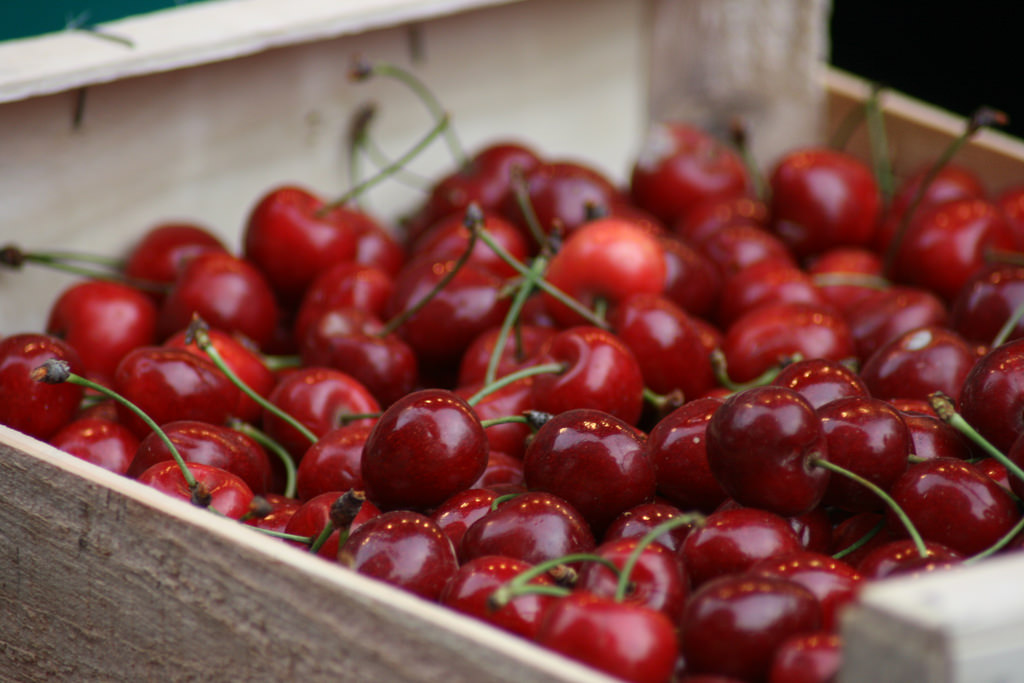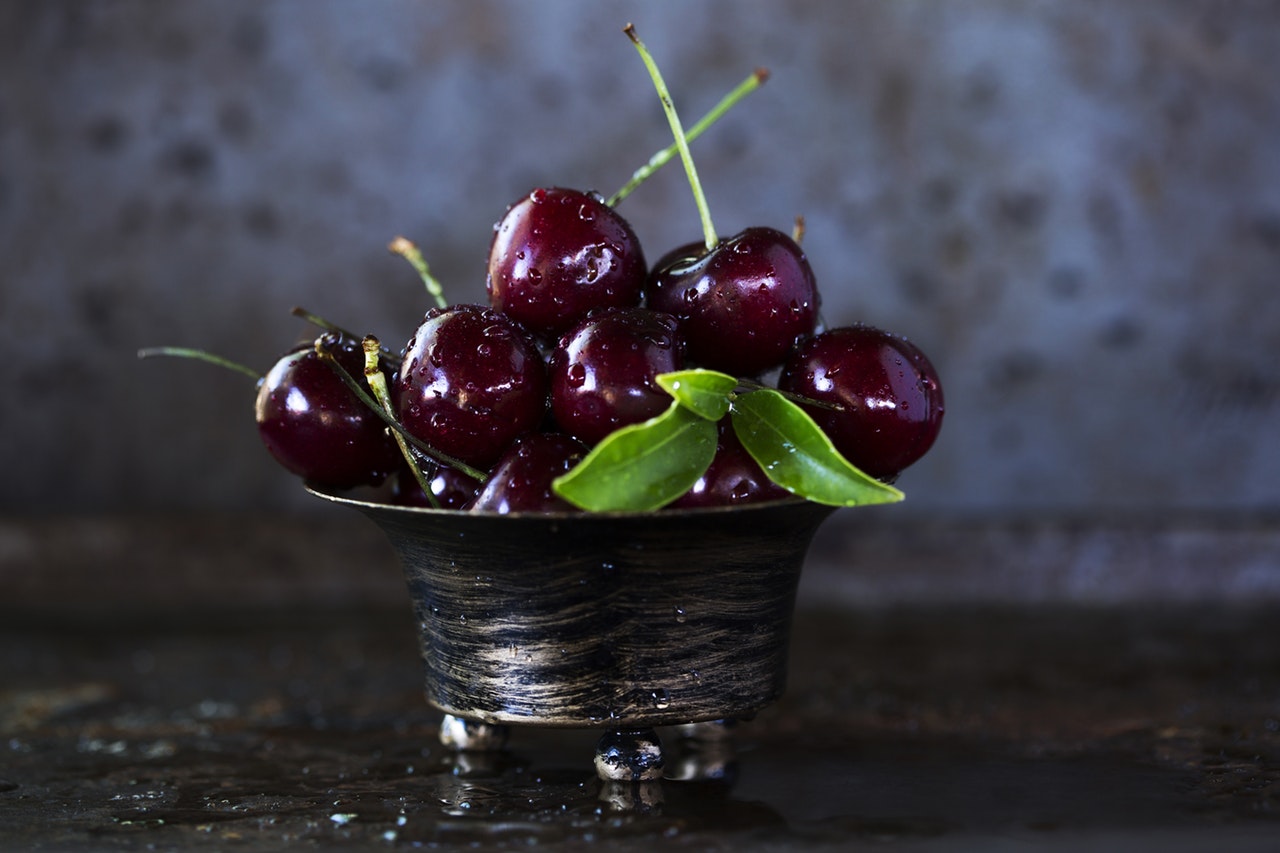
Cherries are small, round fruit with a smooth skin. Sweet cherries, Prunus avium, are the fruit most associated with snacking and eating raw, and the sour cherries, Prunus cerasus, are tart, smaller than the sweet, and are often used in preserves. Maraschino cherries are actually light colored blush cherries that are bleached before being soaked in a sweet brine colored with a red food dye.
Popular Sweet and Sour Cultivars
Sweet cherries are either self-fertile or require a pollinizer for fruiting, a different cherry tree, to set the fruit (the pollen needs to be from a different variety). Unlike sweet cherries, sour cherries are all self-fertile.
Sweet Cherry Cultivars
- Bing – Very popular sweet variety, sweet and firm fruit with good storage qualities. Deep red or mahogany color. Requires a pollinizer.
- Rainier – Blush variety, with colors ranging from a gold to a colorful bright red top. Requires a pollinizer.
- Benton – Deep red or mahogany color, sweet and large. Self-fertile cherry.
- Attika – Deep red color to mahogany, fruit is large and sweet, and flesh is firm. Requires a pollinizer.
- Tieton – Bright to dark red large fruit with strong stems. Requires a pollinizer.
- Sandra Rose – Large fruit with deep red color. Self-fertile cherry.
- Stardust – Large blush style cherry. Self-fertile cherry.
- Van – Medium sized, dark red with firm fruit. Requires a pollinizer.
Sour Cherry Cultivars
- North Star – Bright red, large fruit, good for juicing or pies. Self-fertile.
- Morello – Dark skin with a deep, dark red flesh. Self-fertile.
- Montmorency – Brightly colored with a sweet-tart profile. Self-fertile.
Growing Cherries
Cherry trees come in regular and dwarf sizes. Dwarf tree sizes reach about 10 feet tall making them perfect for smaller yards or a tighter spot in the garden. Regular cherry trees can grow from 20 to 35 feet or higher. Sour cherries are more cold hardy than the sweet cherries. When planting, space them out 20 to 30 feet apart, depending on variety.
Sweet cherries are hardy in zones 5-7, but can also grow in 8 or 9, and sour cherries grow in zones 4-6. Note that cherries require a certain number of chill hours. When selecting a cherry tree to plant in your garden, ensure your area has the proper amount of chill hours in your area to set the fruit.
Planting a Bareroot Cherry Tree
For bareroot cherry trees, soak the roots in water for a couple of hours before planting. While the root ball is soaking in water, dig the hole which should be as wide as the roots when spread with a little extra room for them to spread out. Place the tree in the hole and gently spread out the roots to encourage growth once the tree wakes up. Refill with the soil you dug up with any amendments you chose to add, leaving the graft part above the ground. To settle the soil, step gently around the trunk and the soil that was dug up, and water the tree well.
Propagating a Cherry Cutting
Choose stems with at least two leaf nodes, and about 6 inches in length. Do not choose a sucker if the tree is grafted, and many varieties of sweet cherries are. Dip one inch at the end in a rooting hormone. Make a hole in your planting material as wide as the stem, and insert the end of the stem inside. Pack the planting material snug around the stem to hold in place making it stand upright and keep moist but not overly wet. A good simple planting material for cuttings is half perlite and half peat.
Cherry Crack / Splitting Cherries
Sweet cherries are susceptible to cracking, so picking when the time is right is crucial when heavy rains or high humidity are expected before harvest. Cherry splitting happens from two different ways. Either it’s caused from ‘plant internal water-induced cracking’ from over irrigation or heavy rains and no drainage, or ‘rain-induced cracking’ where water is soaked through the skin until it bursts.
Harvesting Cherries
Test sweet cherries before picking. If the color is deep, and the fruit is sweet and juicy, then they are ready. For sour cherries, if the fruit is easily pulled from the tree, then they are ready.
Freezing and Drying Cherries
Cherries are easily froze or dried for preservation. For details on how to freeze or dry fresh cherries, read How to Preserve Cherries by Freezing or Drying.
Image of cherries from QuinnDombrowski via a CC by-SA 2.0 license.


